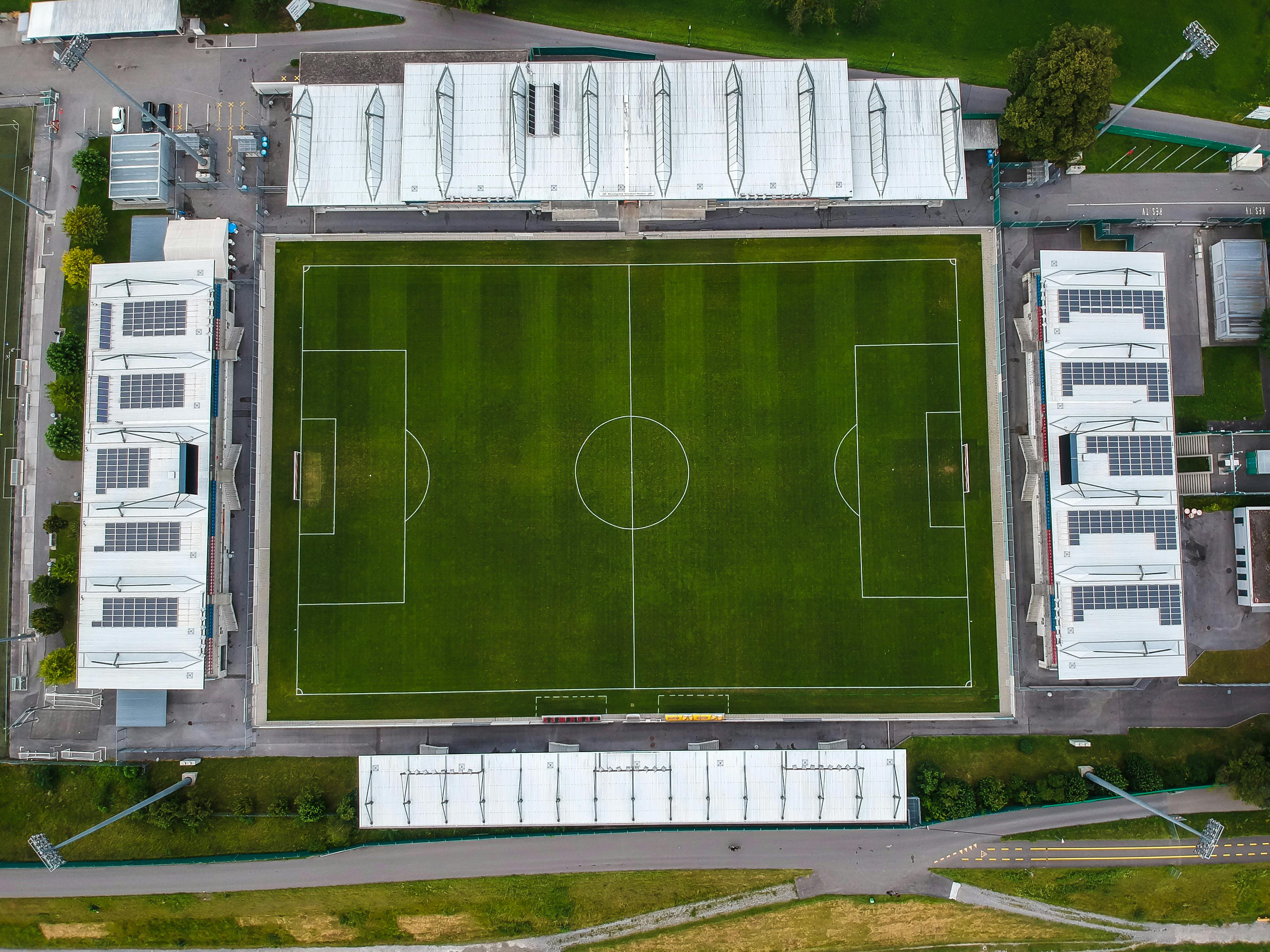Soccer is one of the most popular sports in the world, and many countries have professional soccer leagues that operate at different levels. Soccer leagues are structured and organized differently depending on the country or region, but all have one aim – to provide a competitive and exciting atmosphere for players and fans alike. In this article, we’ll take a look at how soccer leagues work from an organizational standpoint, including their different formats, promotions and relegation systems, and other elements of their structure.Soccer leagues operate by dividing teams into divisions and conferences based on geographical location, skill level, and other relevant factors. Each division consists of a predetermined number of teams that compete against each other throughout the season. Divisions are further divided into conferences, which are smaller groups of teams within a division. At the end of a season, the top teams from each conference may compete in a playoff tournament to determine the champion for that particular soccer league.
Types of Soccer Leagues
Soccer is one of the most popular sports in the world, and it is no surprise that there are numerous types of soccer leagues around the globe. These leagues vary in terms of structure, play style, and rules. Depending on where you live, you may have access to some or all of these leagues.
The first type of league is professional soccer. These leagues comprise teams that compete for a championship and are typically funded by sponsorships or television deals. Professional soccer leagues usually feature some of the best players in the world and often attract large crowds to their games. Examples of professional soccer leagues include Major League Soccer (MLS) in North America, La Liga in Spain, Serie A in Italy, and the English Premier League (EPL).
The second type of league is amateur soccer. These leagues feature players who are not professionals but still enjoy playing competitively. Amateur soccer leagues generally have lower costs than professional ones and can be a great way for children to learn the game or for adults to stay active while having fun. Examples include local recreational leagues as well as adult amateur leagues such as Sunday League or pub league teams.
The third type of league is youth soccer. These are organized competitions featuring teams from different age groups ranging from U-7s up to U-19s. This allows young players to gain experience playing competitively while allowing them to develop their skills at a comfortable pace. Youth soccer also offers an opportunity for parents to get more involved in their children’s activities and can help foster a sense of community among families who support each other’s teams.
Finally, there are international club tournaments such as the UEFA Champions League and FIFA World Cup which bring together teams from all over the world to compete against each other on a global stage. These tournaments feature some of the best players from across Europe, South America, Africa, Asia, and Oceania competing for titles such as European Champion or World Cup Champion respectively.
Overall, there are many different types of soccer leagues available depending on where you live and what level you want to play at. Whether you are looking for competitive action or just want to have fun with friends while learning about the game, there is sure to be a league that fits your needs!
League Structure and Organization
Professional sports leagues are organized into divisions, conferences, and teams. Each division contains four or more teams, while each conference consists of two or more divisions. All teams in the same division will play each other twice during the regular season, while teams in different divisions will play each other once. Conferences are used to determine playoff seedings and home field advantage in post-season play.
At the end of the regular season, the top two teams from each conference advance to the playoffs. The playoffs consist of a single elimination tournament with a best-of-seven series format for each series. The winners of each series will advance to the next round until one team is crowned champion at the end of the playoffs.
The league also employs a number of staff members who work behind the scenes to ensure that everything runs smoothly. This includes marketing and media professionals who manage promotions and broadcast rights, as well as legal advisors to help with contract negotiations and disputes between players and teams. The league also has an administrative staff who handle things like scheduling games, setting rules for play, managing player salaries, and handling disciplinary issues such as drug testing or suspensions.
Additionally, there are various committees made up of owners or general managers who oversee certain aspects of league operations such as finance, broadcasting rights, marketing initiatives, etc. These committees meet regularly to discuss issues affecting their respective areas of responsibility and make recommendations to the league office on how best to handle them.
Overall, professional sports leagues have multiple layers of organization in place to ensure that they run smoothly and efficiently while providing an entertaining experience for their fans. From scheduling games to negotiating contracts and broadcasting rights, all aspects of running a sports league require careful planning and management in order for it to be successful.
Player Eligibility and Registration
Players must fulfill certain eligibility criteria to participate in sports competitions. Generally, the eligibility criteria are based on age, experience, and skill level. All players must meet the minimum requirements set by the governing body or league in order to be eligible for competition. Players must register with the governing body or league in order to participate in any competition. Registration typically includes providing documentation such as proof of age, signing a waiver, and completing any other necessary forms. In some cases, players may be required to pay a registration fee to participate in a sport or activity.
Once registered, players will receive information about the sport or activity that they have joined, including rules and regulations. It is important that all players understand these rules and regulations in order to ensure fair play and safety for all participants. Additionally, each player should make sure they have all of the appropriate safety gear before participating in any activity. This equipment may include protective clothing, helmets, pads, and other specific items required for that particular sport or activity.
It is also important for players to keep their registration information up-to-date with their governing body or league. If any changes occur with contact information or other pertinent details related to a player’s participation status (such as injury or illness), it is important that this information is communicated promptly so that appropriate adjustments can be made as needed.
Point System
In most sports, points are awarded to teams or individual players based on the outcome of their performance. Points are typically awarded in a variety of ways, from winning a match or game to simply making a certain score or statistic. The point system helps determine which team or individual will be crowned the champion at the end of the season. Points are also usually used to determine which teams will make it to the playoffs and ultimately compete for a championship.
The point system is generally set up so that each team or player has an equal chance of earning points throughout the season. This is typically done by awarding more points for victories than for losses, and by assigning different values for different types of achievements or accomplishments. For example, in some sports, a win may be worth three points while a draw may only be worth one point. This allows teams that win more games to gain more points than teams that lose more games.
The point system can also be used in conjunction with other metrics such as goal difference or goals scored to further differentiate between teams and players. In some cases, points may be awarded for other accomplishments such as clean sheets, assists, or saves made during matches.
Standings
At the end of a season, standings are released based on the total number of points each team has earned throughout the year. This is usually done in order to determine which teams have performed well enough to qualify for playoffs and ultimately compete for championships. In some cases, additional tie-breakers may be used to break ties between teams with an equal amount of points if necessary.
In addition to tracking how many points each team has earned over the course of a season, standings can also track other statistics such as wins and losses as well as goal difference and goals scored. This can help provide additional context when comparing teams with similar records but different styles of play or strategies used throughout the season.
Overall, points systems and standings help provide an objective way to measure performance over time and compare different teams’ results against one another in order to crown champions at the end of each season.

Promotion and Relegation
Promotion and relegation is a system used in many sports leagues which allows teams to move between multiple divisions based on their performance. In this system, the best performing teams are promoted to higher divisions, while the worst performing teams are relegated to lower divisions. This system ensures that the competition is kept fair and balanced by not allowing any team to remain in a higher division for too long. It also encourages teams to strive for excellence so that they can be rewarded with promotions and avoid relegation. The use of promotion and relegation also allows for different levels of competition between different divisions, ensuring that there is something for every level of player. It also keeps the sport interesting as teams can move up or down the divisions depending on their performance, creating an ever-changing landscape of competition.
In order for promotion and relegation to work effectively, it is important that there is an even number of teams in each division. This ensures that when teams are promoted or relegated, they do not take up more than half of the available spaces in any given division. Additionally, it is important that each division has a similar level of competition so that the best teams do not dominate every division while weaker teams struggle against them. This helps ensure fairness throughout all divisions and encourages growth in all areas of the sport.
Promotion and relegation can be a great way to keep sports leagues interesting and competitive over long periods of time. By allowing teams to move between different divisions based on their performance, this system ensures that no team remains unchallenged at any one level for too long. It also creates an ever-changing landscape of competition which helps keep sports lovers engaged over long periods of time.
UEFA Champions League Competitions
The UEFA Champions League is one of the most prestigious club competitions in world football. It is a tournament that pits Europe’s top teams against each other in a battle for continental supremacy. Each season, 32 teams compete for the coveted trophy, playing a total of 64 matches over the course of the competition. The teams are divided into 8 groups of 4, with each team playing each other twice – once home and once away. At the end of the group stage, the top two teams from each group progress to the knockout stages, where they battle it out in two-legged ties until only one team remains standing. The Champions League final is watched by millions of fans around the world and is one of the most eagerly anticipated events in football.
UEFA Europa League
The UEFA Europa League is Europe’s second-tier club competition and features 48 teams from across the continent. Teams from lower-ranked leagues enter at an earlier stage than those from higher-ranked leagues, with a total of four rounds before reaching the group stage. Once there, 12 groups are formed with three teams each and each team plays twice against every other team in its group – once home and once away. At the end of these fixtures, 8 best third-placed teams join 16 direct qualifiers to form a knockout phase which eventually decides who lifts Europe’s second biggest trophy.
UEFA Cup Competitions
In addition to its two main European club competitions, UEFA also organises several cup competitions throughout its member nations. These include national cup competitions such as England’s FA Cup and Scotland’s Scottish Cup; regional cup competitions such as Spain’s Copa del Rey; and international club cup competitions such as The Intertoto Cup and The Super Cup. All these cups involve different numbers of clubs competing against each other over a set number of matches until one team emerges victorious at the end.
Playoffs
Playoffs are an integral part of UEFA’s tournament structure, providing an additional layer to some existing tournaments while also forming entire competitions on their own. They are used to determine which clubs will take part in larger tournaments or decide who will win smaller ones such as UEFA Nations League or European Qualifiers playoffs for major international tournaments like EURO or World Cup Finals. Playoff matches often take place over two legs with both teams playing at home in order to determine who makes it through to the next round or wins outright depending on what type of tournament it is.
Playoff Scheduling and Match Regulations
The playoff scheduling and match regulations are set by the governing body of the sport. These regulations dictate who can compete in the playoffs, how many games will be played, and which teams are eligible to compete. The regulations also provide guidelines for how playoffs should be conducted, including rules concerning overtime, tiebreakers, and playoff seeding. Additionally, the regulations may include criteria for awarding points or bonus points to teams that perform well during the playoffs. Finally, these regulations may also specify when and where playoff games should be held, as well as how long each game should last.
The playoff scheduling and match regulations are intended to ensure fair play in the playoffs while giving all participants a chance to compete. To this end, it is important that everyone involved is aware of all rules before the playoff begins so that there is no confusion or misunderstanding during the competition. Additionally, having clear guidelines in place ensures that any disputes or disagreements can be quickly resolved with minimal disruption to the overall tournament.
In order to ensure that all participants adhere to these regulations, it is important for those organizing the competition to regularly monitor teams’ compliance with them. Teams who violate these rules may face penalties such as disqualification or a reduction in points earned during the competition. It is therefore important for organizers to remain vigilant when it comes to ensuring that all participants abide by these rules.

Conclusion
Soccer leagues are incredibly complex systems that vary from country to country. Each league has its own set of rules and regulations, and each team will have its own unique strategy for success. In any case, the common thread of soccer leagues is that they provide a platform for teams to compete and show off their skills. As soccer continues to grow worldwide, leagues continue to evolve in order to better meet the needs of fans, players, coaches, and sponsors alike.
The most successful soccer leagues are those that have established a strong brand and fan base. By providing high-quality matches and creating opportunities for players to showcase their abilities, these leagues can draw in more viewers and attract more sponsors. Soccer leagues also provide an opportunity for teams to test their strategies against one another in a competitive environment.
Ultimately, soccer leagues are an important part of the game as they provide competition between teams from all over the world. They are one of the key components of the sport’s success as it enables teams to progress, hone their skills, and create rivalries that can last a lifetime.

